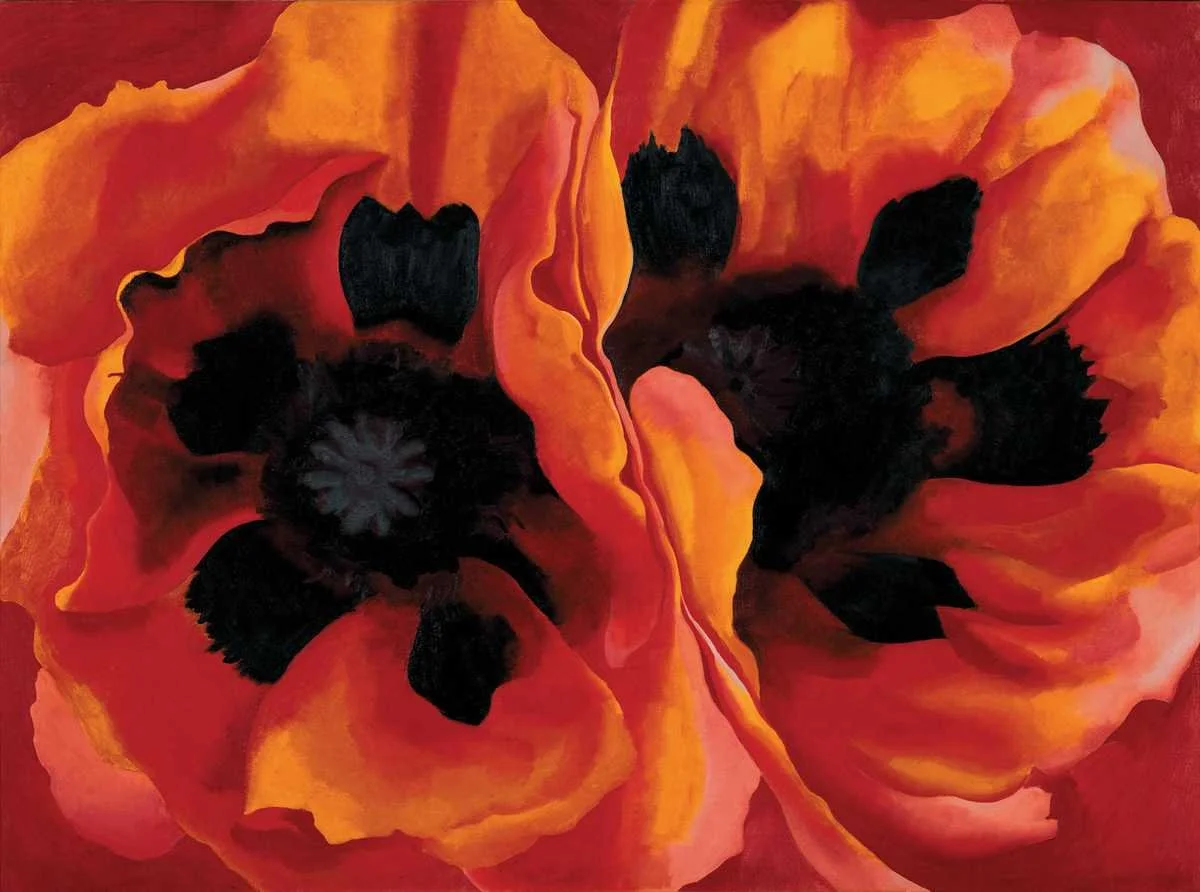Georgia O’Keefe
Georgia O’Keeffe, known as the Mother of American Modernism, was born in Wisconsin in 1887, O’Keefe was stricken with illness for lengthy periods, but she still managed to produce over 2000 paintings in her lifetime. She taught in many schools and colleges before being 'discovered' and subsequently promoted by her future husband – Alfred Stieglitz, a New York photographer and gallery owner, 24 years her senior. By the late 1920’s, O’Keefe was one of America’s most celebrated American Modernist artists.
Her Work
O’Keeffe is well known for creating large-scale paintings of natural forms and flowers at close range. Over the years, her subjects included New York skyscrapers, flowers and natural forms, New Mexico landscapes, and bones and skulls. She would work with her subject matter over and over, often for decades, until many became abstracted. One subject she kept returning to was the mountain outside her home in New Mexico which she adored. After her death in 1986, her ashes were scattered there.
Jimson Weed - Georgia O’Keefe
Two Calla Lilies on Pink by Georgia O’Keefe, 1928
Her Style
Although a brilliant Realist painter, O’Keeffe rejected this traditional style in favour of the Modernism. Modernism was a movement that believed art should be an intellectual and imaginative process where the art is a personal expression. She used photography in her artmaking process - cropping, magnifying and flattening her images, resulting in many of her paintings becoming unrecognisable abstracts.
Her use of colour, line and composition was ground-breaking. She used line only to define regions in the canvas and divide her compositions into dynamic zones of colour. Details were added freely without an underdrawing. O’Keeffe is primarily known for her work in oils, however she was also a brilliant watercolour painter as well as being proficient at using charcoal and clay.
Her Influences
In her twenties, O’Keeffe was deeply influenced by Modernist artist and teacher, Arthur Dow, who taught her to interpret her subject matter rather than trying to represent it accurately. She was greatly encouraged and publicised by Alfred Steiglitz, who then became her husband. He was a photographer who introduced her to the idea of cropping and enlarging what she saw to turn images into unusual and abstract forms. Her suroundings were a huge influence on what she painted. She was inspired by flowers, New York skyscrapers and the rugged landscapes of New Mexico.
Georgia O’Keeffe - Canyon With Crows, 1917. Watercolour and graphite on paper.
A fiercely independent woman, O'Keeffe would camp out alone to paint the scenery, using her car as a studio
Although a brilliant Realist painter, O’Keeffe rejected this traditional style in favour of the Modernism, a movement that believed art should be an intellectual and imaginative process where the art is a personal expression. She used photography in her artmaking process - cropping, magnifying and flattening her images, resulting in many of her paintings becoming unrecognisable abstracts. Her use of colour, line and composition was ground-breaking.
She used line only to define regions in the canvas and divide her compositions into dynamic zones of colour. Details were added freely without an underdrawing. O’Keeffe is primarily known for her work in oils, however she was also a brilliant watercolour painter as well as being proficient at using charcoal and clay.
Georgia O’Keefe - Oriental Poppies
Would you love to paint like O’Keefe? Join us for our 10 week All-Abilities course and explore wide range of mediums and artistic styles. These art classes are suitable for all abilities, including complete beginners. We explore everything from architecture to portraits, using pencils, charcoal, pastels, watercolour, gouache and acrylics.





